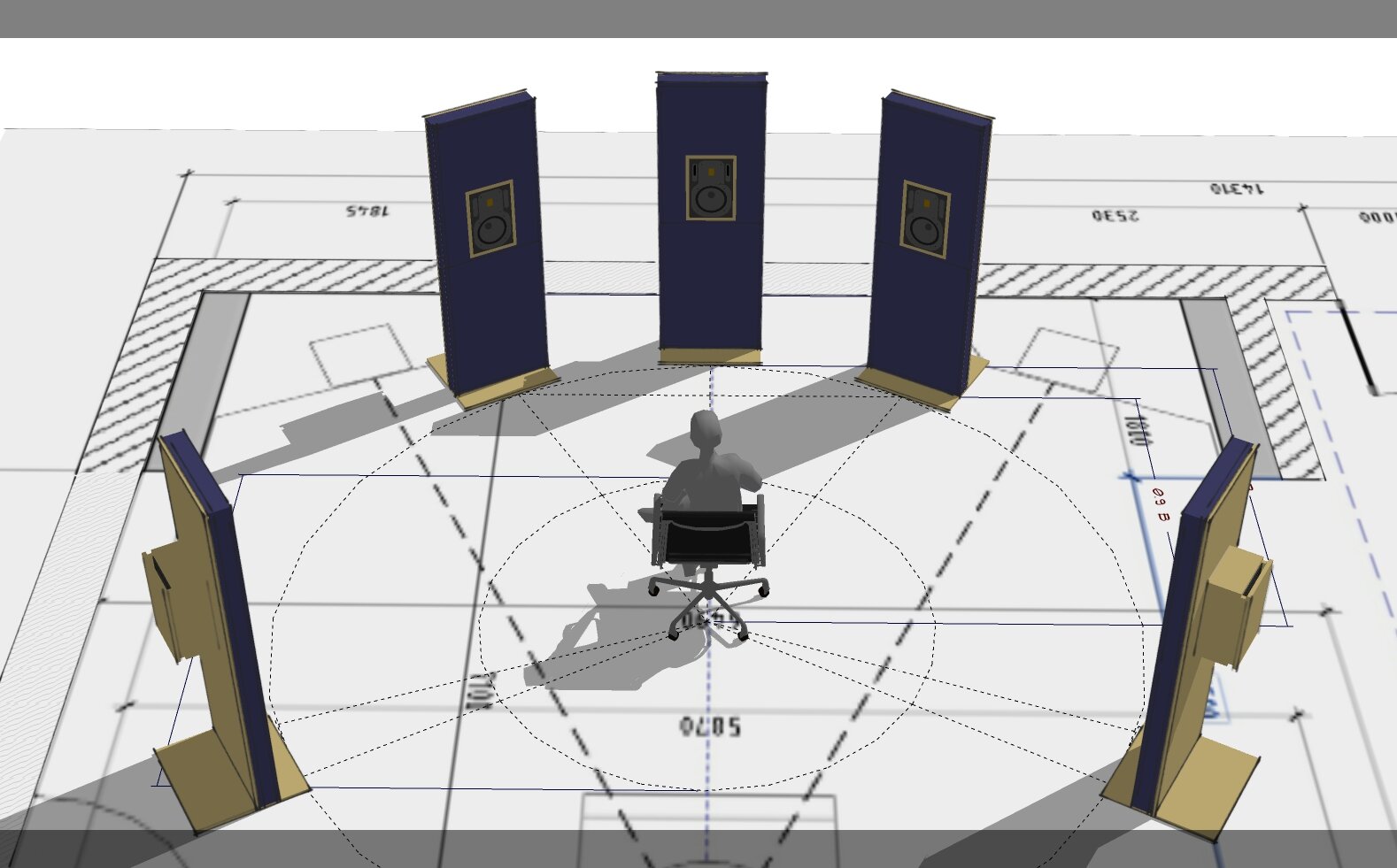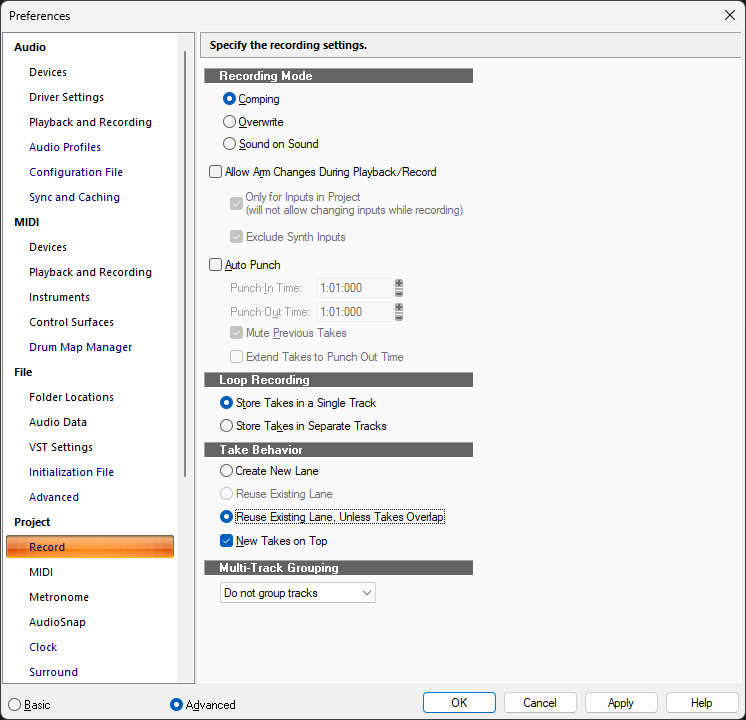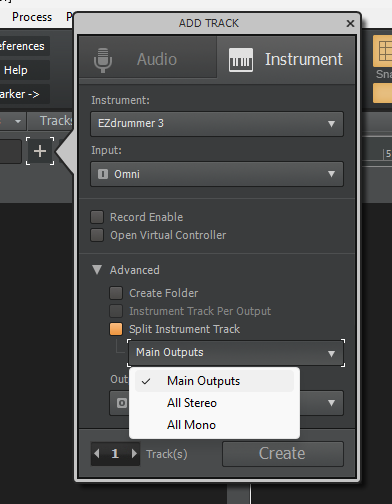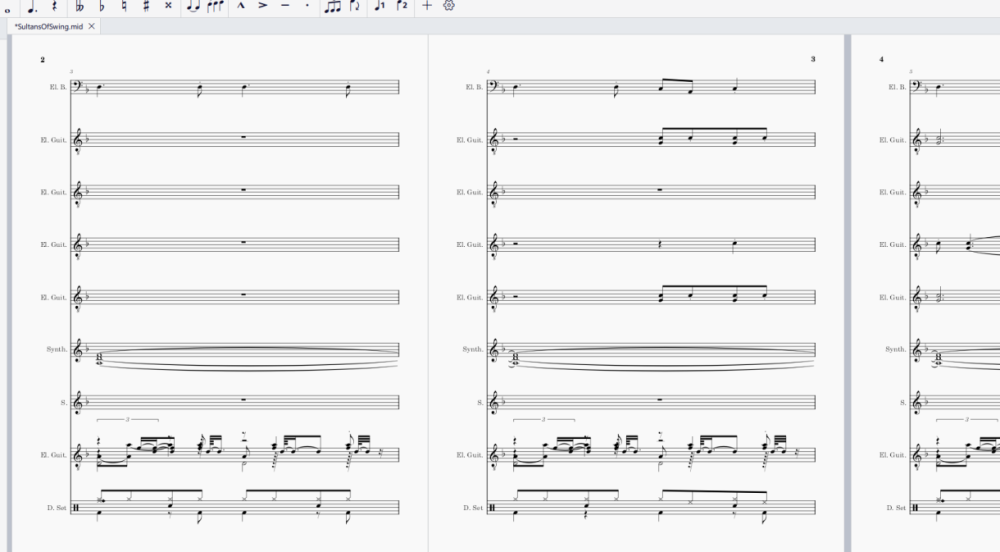-
Posts
1,719 -
Joined
-
Last visited
Everything posted by Glenn Stanton
-
quick listen sounds like someone really likes Alanis Morrisette 🙂 definitely needs a lot more mixing though - one thing jumps out - the snare is very inconsistent and a lot of other masking and levels getting jumbled.
- 5 replies
-
- 1
-

-
- feedback
- experiment
-
(and 3 more)
Tagged with:
-

Feedback on song--Experiment (Moved to Songs Forum)
Glenn Stanton replied to MixingMastering's question in Q&A
quick listen sounds like someone really likes Alanis Morrisette 🙂 definitely needs a lot more mixing though - one thing jumps out - the snare is very inconsistent and a lot of other masking and levels getting jumbled.- 5 replies
-
- feedback
- song feedback
-
(and 2 more)
Tagged with:
-

Feedback on song--Experiment (Moved to Songs Forum)
Glenn Stanton replied to MixingMastering's question in Q&A
best bet is to share the song in the Songs section where people tend to go when they want to listen to new stuff (and old stuff) as well as sharing. or just do as Greg said in 20 seconds before my post... 😉- 5 replies
-
- 1
-

-
- feedback
- song feedback
-
(and 2 more)
Tagged with:
-
oh no! not planned obsolescence!! 🤪imagine if you will, companies that "make stuff" give it a lifespan in order to address new things people might want, make new sales, as well as help their partners sell stuff... almost like the automobile industry of yore...
-

Sheet music / staff view - adding notes and dynamic markings
Glenn Stanton replied to ThexEmperorx's topic in Feedback Loop
you might check out Musescore instead for more sophisticated notation. then once you have the composition, export as MIDI and import into the DAW and assign proper instruments. the CW staff view is limited. you oculd check the help file for the latest: https://legacy.cakewalk.com/Documentation?product=Cakewalk&language=3&help=Notation.01.html -

Output 3 different midi tracks to separate audio tracks
Glenn Stanton replied to Frank DeFede's topic in Cakewalk by BandLab
looks like you have a single TTS-1 instance. so freezing one freezes the others... best bet may be to render the audio for each then mute the MIDI for that track. -
Melodyne working fine for me as well. something to check - when you find a number of plugins misbehaving - re-run the redistributables for Cakewalk this happens to be the cure for when Microsoft Edge and several other companies are busy making your user experience better and embedding all the AI-wares to make sure every keystroke is a lead to a possible solution to the meaning of life, the universe, and everything...
-
HAL, please open the pod doors.
-

Plugin (and other) preset location
Glenn Stanton replied to Jan Deeben's topic in Instruments & Effects
pretty much John has the best way. the presets file content is binary and even if you check in the registry (under the intuitive names of ActiveMovie -> Presets, many of them have content where the name is missing (although a bunch of the commercial ones do have the names), so you'd have to guess at the list of content to determine if it's a plugin you want to keep the preset for. in this example, i knows its for my Channel Tools plugin as i use custom settings for set the width on stereo instruments. another option is to copy them all over - they're associated in the registry (under the vst listing) so they'll only be used by those programs anyways. -
and you checked the audio level of the guitar before pressing record? https://legacy.cakewalk.com/Documentation?product=Cakewalk&language=3&help=Recording.19.html very likely the guitar which is further away from the mic, needs additional level on the input.
-
thanks! i hadn't watched it (but did now). since i have the TTS-1 as well as the Coyote WT and the VSTSynthFont if i need a quick GM MIDI i should be good to go. one of the things i use TTS-1 for is to quickly capture the markers and tempo changes from the MIDI i export from Hookpad (hookpad.hooktheory.com). then import my regular recording template. re-arrange the MIDI into my normal instruments and i'm ready to record, arrange etc...
-
then there is the coolsoft virtual synth https://coolsoft.altervista.org/en/virtualmidisynth i used to have it installed when i wanted something with more control vs the MS synth.
-
no idea unless you disarmed the audio track. either way, if you recorded the MIDI, you can just play it while you re-record the audio.
-

Can't hear what I recorded with my microphone.
Glenn Stanton replied to Krishna Ramsundar's topic in Gear
maybe share the solution so other can learn? -
yes, i set mine to all 24-bit (24/24/24) and when i checked several projects (to be sure 🙂 ) where i know i did a lot of rendering steps, all of them were 24-bit as expected.
-
Alt+9 = open synth rack view, then the + symbol and then select EZDrummer --- OR ---- open add track and select the Instrument tab select Ezdrummer 3, advanced -> split instrument track -> output type you desire
-
and in effect, 32-bit is "lossy" because of the float... same reason banks don't use floating point for currency calculations... e.g .https://dzone.com/articles/never-use-float-and-double-for-monetary-calculatio
-

Export sounds different than playback in cakewalk
Glenn Stanton replied to MixingMastering's question in Q&A
divide and conquer! if you find it's the FX then at least you know it vs tracks. either way you'll still need to do the elimination steps - but you could also divide the project into 1/2 of the tracks first, then if the same you know it's the other set. etc. might be speedier if you have a lot tracks...- 3 replies
-
- export
- export issue
-
(and 3 more)
Tagged with:
-
this might help getting past the first one or two entries in the search results... 🙂 https://musescore.org/en/handbook/3/soundfonts-and-sfz-files The list below are different from other sf2/sf3/sfz online depositories, in that these virtual instruments contains at least one Musescore 3 compatible attenuation modulator. That is, they are engineered to at least responds to one volume-affecting MIDI data exchange practice used by Musescore 3, such as MIDI velocity. Community handbook editors updating this list should be mindful of the distribution aspect of the SoundFonts or SFZ's license (wikipedia) All sounds GeneralUser GS Direct download from schristiancollins.com (29.8 MB uncompressed) Courtesy of S. Christian Collins Magic Sound Font, version 2.0 (67.8 MB uncompressed) Arachno SoundFont, version 1.0 (148 MB uncompressed) Courtesy of Maxime Abbey TimGM 6mb: The free default soundfont that comes with MuseScore 1 Direct download from sourceforge (5.7 MB uncompressed): License: GNU GPL, version 2 Courtesy of Tim Brechbill FluidR3Mono_GM: The free default soundfont that comes with MuseScore 2 (up to version 2.1). SF3 Direct download from github (13.8 MB). License: MIT license MuseScore_General and MuseScore_General_HQ:MuseScore_General.sf3 is the free default soundfont that comes with MuseScore 3 and MuseScore 2 (2.2 and above). SF3 Direct download from osuosl.org (35.9 MB) SF2 Direct download from osuosl.org (208 MB) MuseScore_General_HQ.sf3 is the pre scale-down version of MuseScore_General. You can download and install it inside Musescore 3 as an extension, see Language, translations, and extensions: install extension. Changelog. License: MIT license Courtesy of S. Christian Collins MS Basic: MS Basic.sf3 is the free default soundfont that comes with MuseScore 4 More info see notes inside your computer's Musescore 4 MuseScore\instruments\instruments.xml Bank and program (work in progress) details on google sheets Development folder on github Timbres of Heaven, version 4.0: Direct download from google drive (429 MB uncompressed) Direct download from jeetee.net Courtesy of Don Allen Soundfonts4U (12 MB up to 1 GB, depending on which package you choose) Collection of beautifully sounding acoustic guitars as well as pianos, basses, strings, harps and many more. Orchestral sounds File that contains common instrument sounds of the four families: Sonatina Symphonic Orchestra (503 MB uncompressed) Downloads: SoundFont | SFZ format License: Creative Commons Sampling Plus 1.0 Aegean Symphonic Orchestra Courtesy of Ziya Mete Demircan (352 MB uncompressed) Piano sounds SF2 Pianos Acoustic grand piano, release 2016-08-04 Description: Yamaha Disklavier Pro Grand Piano, sf2 format, 36 MB compressed, 113 MB uncompressed, 121 samples, 5 velocity layers More information: https://freepats.zenvoid.org/ including other soundfonts. License: Creative Commons Attribution 3.0 Courtesy of Roberto Gordo Saez Salamander C5 Light Courtesy of Ziya Mete Demircan (24.5 MB uncompressed) SFZ Pianos Salamander Grand Piano Downloads: version 2 | version 3 Description: Yamaha C5, 48kHz, 24bit, 16 velocity layers, between 80 MB and 1.9 GB uncompressed License: Creative Commons Attribution 3.0 Courtesy of Alexander Holm Detuned Piano (244 MB uncompressed) License: Creative Commons Attribution-ShareAlike 3.0 Plucked Piano Strings Description: 44.1kHz, 16bit, stereo, 168 MB uncompressed License: Creative Commons Attribution-ShareAlike 3.0 The City Piano Description: Baldwin Baby Grand, 4 velocity layers, 696 MB uncompressed License: Public domain Courtesy of Big Cat Instruments Kawai Upright Piano, release 2017-01-28 Description: 68 samples, 44KHz, 24bit, stereo, 2 velocity layers, 58 MB uncompressed License: GNU General Public License version 3 or later, with a special exception Courtesy of Gonzalo and Roberto Drumset SFZs The free MuseScore Drumline (MDL) extension contains a collection of drumset sounds, to download and install see Language, translations, and extensions: install extension
-
Musescore has some large SF2 files available which form the basis for their orchestration. and there are a quite a few free SF2 GM files out there. note: musescore.org and ONLY the free software - do not use the Musehub unless you like the pain and suffering thing. musescore.com is the paid score site - unless you want to pay for sheet music, i'd avoid that as well. Musescore (which is not a plugin) is pretty good at taking a MIDI file and converting into the right set of instruments. like TTS-1, not great instruments, but the Musehub sounds (imho) are not great either - so if i failed to mention not installing Musehub because of pain and suffering, then i suggest avoiding it...
-

How to reduce Hiss / Noise on Tail of Audio Clip
Glenn Stanton replied to Stephen Power's question in Q&A
this is a recorded triangle - if so - then the hiss is part of the audio and to get it to trail off while reducing the hiss - you might need to pre-process it using something like RX to remove and/or attenuate the noise and/or manually edit it. depending also on the perfection needed - use a sample or synth to re-create the triangle part (think of it as "drum replacement" or "sample augmentation" 🙂 )









